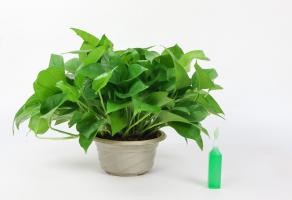How to Acidify Plant Water Solution
Acidifying plant water solution is important for certain plants that thrive in acidic conditions such as azaleas, blueberries, and hydrangeas. Here are some easy steps to help you acidify your plant water solution and promote healthy plant growth:
Step 1: Determine the pH of Your Water
The first step in acidifying plant water solution is to determine the pH of your water. You can purchase a pH testing kit at your local garden center or online. Fill a small container with clean water and test the pH using the kit. If the pH is above 7, then your water is alkaline and you need to acidify it.
Step 2: Choose an Acidifying Agent
There are several acidifying agents that you can use to lower the pH of your plant water solution. Some common options include vinegar, lemon juice, and citric acid. You can also use specialized acidifying solutions sold at garden centers.
Step 3: Add the Acidifying Agent
Once you have determined the pH of your water and chosen your acidifying agent, you can add it to your plant water solution. It’s important to add the acidifying agent gradually, testing the pH at regular intervals until it reaches the desired level. Avoid adding too much acidifying agent as this can harm your plants.
Step 4: Monitor the pH Level
After adding the acidifying agent, it’s important to regularly monitor the pH level of your plant water solution. You can do this using a pH testing kit. If the pH level becomes too low, you can add some water to dilute the solution. On the other hand, if the pH level becomes too high, you can add more acidifying agent.
Step 5: Water Your Plants
After acidifying your plant water solution, you can use it to water your plants. For best results, water your plants with the solution once a week or as needed. Be sure to follow any specific watering instructions for your plants.
Conclusion
Acidifying plant water solution is an important step for promoting healthy growth in certain plant species. By following these simple steps, you can easily acidify your plant water solution and provide your plants with the optimal growing conditions they need to thrive.

 how many times do yo...
how many times do yo... how many planted tre...
how many planted tre... how many pine trees ...
how many pine trees ... how many pecan trees...
how many pecan trees... how many plants comp...
how many plants comp... how many plants can ...
how many plants can ... how many plants and ...
how many plants and ... how many pepper plan...
how many pepper plan...

































